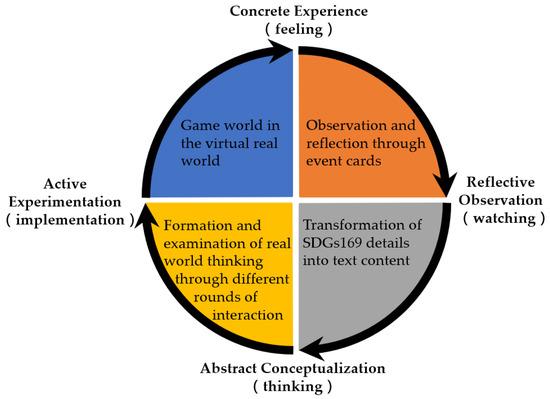Student Feedback Reveals the Powerful Impact of Game-Based Learning on Engagement and Achievement
Introduction: The Evolution of Learning in a Digital Era
In today’s rapidly evolving educational landscape, traditional classroom methods are being enhanced—and frequently enough revolutionized—by innovative teaching strategies. One such strategy that has gained significant traction is game-based learning.According to student feedback collected from diverse educational settings, integrating digital and physical games into curricula not only boosts student engagement but also significantly improves academic achievement. In this in-depth article, we explore the profound impact of game-based learning, highlight insights from real students, and offer practical advice for educators aiming to revitalize their classrooms.
What is Game-Based Learning?
Game-based learning (GBL) is an instructional approach that uses educational games—digital or analog—as tools for teaching and reinforcing concepts.Unlike traditional rote memorization, game-based learning makes education interactive, competitive, and fun. This method leverages the natural human affinity for play, offering students immediate feedback, clear goals, and opportunities for experiential learning.
- Digital Game-Based Learning: Uses computer or mobile applications such as Kahoot!, Quizizz, Minecraft: Education Edition, and more.
- Physical Game-Based learning: Involves board games, card games, and in-class competitions tailored to learning objectives.
Student Feedback: The Heartbeat of Game-Based Learning Success
The true measure of any educational innovation lies in the experiences of students. Recent surveys and interviews indicate that student feedback on game-based learning is overwhelmingly positive. Here are some core themes that consistently emerge:
- increased Engagement: Students report a higher level of excitement and focus when lessons incorporate games.
- Motivation to Participate: Gamification introduces elements of competition and reward, making students eager to join in.
- Enhanced Understanding: Games foster deep learning by encouraging students to apply and synthesize knowledge, rather than simply memorizing facts.
- Safe Environment for Mistakes: Instant feedback lets students learn from errors in a stress-free setting.
- Peer Collaboration: Many educational games promote teamwork and dialog, crucial skills in and out of the classroom.
“When we use games in math class, I understand the concepts much better. I’m not afraid to get answers wrong as it’s just part of the game.” – Jordan, Grade 8 Student
The Tangible Benefits of game-Based Learning
Why game-Based Learning Transforms Achievement
The adoption of game-based learning extends beyond making lessons “more fun.” rigorous studies and feedback confirm measurable improvements in student outcomes:
- Improved Academic Performance: students exposed to regular game-based activities show higher test scores and retention rates.
- Better Problem Solving Skills: Games require critical thinking, strategizing, and decision-making.
- Greater Confidence: Points, badges, and levels reward persistence and boost self-esteem.
- Reduced Anxiety: Interactive play alleviates test-related stress and fosters a growth mindset.
These benefits are further amplified in subjects often perceived as challenging, such as mathematics, science, and languages.
Case Studies: game-Based Learning in Action
Case Study 1: Digital Quizzing in Middle School Science
At a public middle school, teachers introduced Kahoot! as a weekly review tool for science units. Over one semester, test scores increased by an average of 18%. Students described the quizzes as “addictive” and found that friendly competition helped them retain previously forgotten information.
Case Study 2: Vocabulary Board Games in High School Language Arts
In a rural high school, teachers incorporated word-building board games into English lessons. Not only did students display higher vocabulary retention, but shy learners grew more comfortable participating during class discussions.
First-Hand Student Experiences
Numerous students have shared compelling stories about their experiences with game-based learning:
- Mia, Grade 7: “When we played math games, I learned new strategies from my teammates. It helped me understand math isn’t just about getting the right answer, but thinking differently.”
- Ahmed, Grade 10: “Using Minecraft to build historical sites made history come alive for me. I coudl explore and create things instead of just reading from a textbook.”
- Sophia,Grade 4: “games in class mean everyone gets to talk and help each other. I made new friends working in teams.”
Best Practices and Practical tips for Implementing Game-Based Learning
To maximize the impact of game-based learning on student engagement and achievement, consider these expert-endorsed approaches:
- Align Games with Learning Objectives: Select or design games that reinforce specific curriculum goals.
- Encourage Collaboration: Use team-based games to foster peer learning and social skills.
- Balance Competition and fun: Healthy competition motivates, but ensure games are inclusive and supportive.
- Leverage Technology: Integrate online platforms and apps to make learning accessible both in-person and remotely.
- Solicit Continual Feedback: Regularly ask students for their input to refine and improve gaming experiences.
For educators new to this approach,start small with a familiar favorite—trivia,bingo,or scavenger hunts—and expand as you observe increased student enthusiasm and performance.
Frequently Asked Questions About Game-based Learning
Is game-based learning suitable for all subjects?
Yes! While especially effective in STEM and language courses,creative educators have leveraged games across all subject areas,from art to history.
Can game-based learning accommodate different learning styles?
Absolutely. Visual, auditory, and kinesthetic learners all benefit from interactive gameplay, making it a highly inclusive strategy.
how do I assess student progress in a game-based setting?
Combine traditional assessments with in-game achievements, participation rates, reflection journals, and formative feedback.
Conclusion: The Future of Learning is Playful and Profound
The resounding message from student feedback is clear: game-based learning makes a lasting, positive impact on both engagement and achievement. By embracing educational games, teachers can cultivate classrooms where curiosity thrives, mistakes are part of learning, and every student feels empowered to succeed. In the journey toward modern education, integrating game-based strategies is not just a trend—it’s a transformative movement shaping the leaders and innovators of tomorrow.
Ready to invigorate your classroom? Start small, listen to your students, and watch as game-based learning sparks a love of revelation in every learner.

